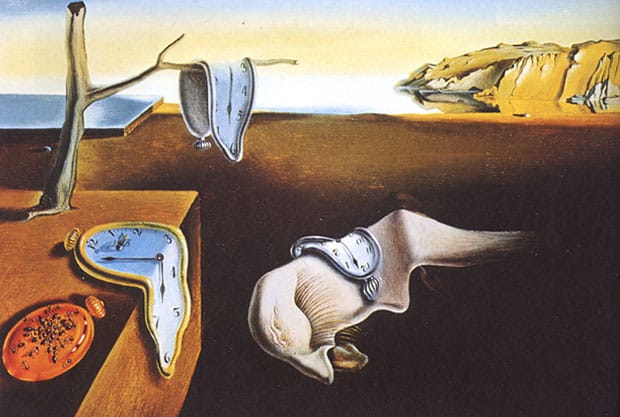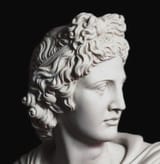The Persistence of Memory and Freud

The persistence of memory is quite the memorable piece. Ugly at the face of it but complex in its mechanism, a mechanism which provides for a different kind of beauty. To explore a piece like it is in many ways to also explore the self and it can be a great joy.
Salvador Dalí's The Persistence of Memory is a surreal masterpiece and while it might not have the traditional beauty of for example impressionistic works, it does carry a sense of intellectual beauty. Whereas the beauty of impressionism is one which does not require understanding or reflection, it is beautiful through its simplicity, Dalí's work requires us to find beauty not within the material form of the painting but through whatever line of thought we apply to it. Naturally then, such a reflection follows.
The Persistence of Memory is an oil on canvas that was painted by Dalí in 1931 and is probably the most recognizable piece of surrealism that the 20th century left behind. It was first exhibited at the Julien Levy gallery in New York and today hangs in the Museum of Modern Art as a permanently exhibited piece. Created in proximity to the publication of Albert Einstein's theory of relativity, Dalí was asked if the melting clocks represented the newly discovered complexity of time. He responded that this was not the case and that they were in fact inspired by melting camembert.
It is widely accepted that the painting is some form of depiction of a dream, or a dreamlike state. The surreal landscape is much like the undefined space of a dream and the melting watches represent the literal bending and distortion of the time wherein this space exists. This efficiently symbolises a dream which does not confine itself to the borders of our rational understanding of space and time. Furthermore, the distorted figure in the middle of the piece is often interpreted as Dalí himself, being based off a creature in Hieronymus Bosch’s The Garden of Earthly Delights where it represents a “fading creature”, one which often shows up in dreams but has no definite shape or form, and it acts here as a feature that both includes the painter himself and communicates in what way he is present. By telling us where and how he is present, we can understand what this painting is about. In this way we are given both the depiction, a dream, and the properties of that depiction, distorted time and space, through symbolic means.
Now that we have established this reading and the defence for that reading, we have a framework within which we are able to further explore the content of this piece. A clear path emerges. Namely, if we are given a third person access to that which we otherwise are bound to experience in the first person we, in a way, have a new access to an experience which is constructed by the unconscious. Sadly this is a very superficial access, because we are of course still confined by the fact that this is only a painting, meaning that all exploration is only symbolic. It is only a simulation of meaningful thought; but this is unproblematic for our ends, we are here not looking for truth but beauty, and that beauty we find in this unique access to the unconscious. The question then becomes, what is there to see when most parts if not all have been used to assemble the very structure wherein we want to explore the parts? I don’t think, however, that running out of building blocks is a problem that we have to confront. The bricks of a house can at once act as parts of that which they make up and their subordinate entity; bricks make walls which make houses just like roof tiles make roofs which make houses.
With this established we can move forward and look at The Persistence of Memory through the eyes of Freud, because within our little construction the painting is very Freudian. Here, between watches and a confusing landscape, we are placed right in the middle of the most hidden part of ourselves. By looking at these parts as if they were not a symbol for our interpretation but instead parts within our interpretation they gain a new meaning. What is the dead tree which holds up the melting time? Or the big flat square in the distance? Perhaps the subject of this dream, the one who experiences this representation of the unconscious, has some form of past trauma relating to death. A death which, however, was required in some sense, as it is now the base on which the liquid time rests. A messy mixture between symbolism of the objective and the pre-established which makes many claims illegitimate but does not negate the fun of exploring such ideas. Furthermore, what then, is that big empty plain in the distance? Maybe it’s a manifestation of emptiness in life, a feeling which is denied to even be one wherein the subject is placed, but which in the unconscious is very much present and here lingers on the horizon like a big bland desert.
Whatever interpretations one makes, each line of thought can be regarded as something quite beautiful and I cannot do anything but promote anyone who sees the value in exploring whatever ideas that spring up when experiencing surrealism to expand on them. Because while interpretations made might not have any greater intellectual value and usually only act to explore things in a confined way, the exploration itself is a very revealing process and while looking at the unconscious of the other one might just accidentally look into the unconscious of the self.




